The fleet of ALH Dhruv helicopters has started flying operations again, the Hindustan Aeronautics Ltd (HAL) said in a release on Monday, May 1. This comes less than a month after the operations of the helicopters were halted by the Indian Navy following an accident off the Mumbai coast.
"In the wake of the ALH Dhruv accident off the Mumbai coast, the Navy halted the operations of ALH Dhruv Helicopters until investigators find the reason for the incident and precautionary checks are carried out," the company had then said.
The ALH choppers are flown by all three defence forces, including the Army, Navy, Air Force, and the Indian Coast Guard. Advanced Light Helicopter or ALH-Dhruv is an indigenously developed utility aircraft by HAL with a twin-engine.
Even though its development was started in 1984, and was initially designed with Germany's assistance Messerschmitt-Bolkow-Blohm (MBB), the helicopter was first flown in 1992 but entered service after certification in 2002. According to HAL, the aircraft is "type –Certified" for military operations by the Centre for Military Airworthiness Certification and civil operations by the Directorate General of Civil Aviation. The major variants of Dhruv are classified as Dhruv Mk-I, Mk-II, Mk-III, and Mk-IV.
Why it stopped operations?
Earlier the MK 3 helicopter on March 8 made an emergency water landing off the coast of Mumbai, and on 26 March 2023, it faced a terrible accident, soon after takeoff from a height of 25 ft near the main runway at Kochi Airport where three Indian Coast Guard servicemen on board survived with minor injuries. Due to this, the operations have been halted and further investigation has been carried out for the same.
It has been reported that during the incident, the Indian Navy ALH chopper experienced a sudden loss of power and rapid loss of height. According to the naval officers, the pilot carried out controlled ditching over water and all three aircrews exited the helicopter safely and were recovered. The ditched helicopter had deployed its emergency flotation gear and efforts are underway to salvage it. In naval terminologies, “ditching” refers to an emergency landing on water.
About ALH Dhruv
The ALH choppers are found in multiple usages and are very frequently operated by all three defence forces including the Army, Navy, and Air Force alongside Indian Coast Guard. The ALH Dhruv choppers are used in multiple roles by the Indian defence forces, including transporting men and material. The ALH Dhruv has become one of the important parts of helicopter missions undertaken by all three forces involved n different terrains they are deployed. As of January 2022, 335 HAL Dhruv have been produced for domestic and export markets logging more than 340,000 flying hours.
Read next
Amid the government looking to establish the national capital as an international aviation hub, Delhi Airport operator DIAL on Monday, May 1 said the airport's terminals will be able to handle 100 million passengers per annum once expansion work gets completed this year. In FY23, the airport, which has three terminals now, handled around 65.33 million passengers, including 15.65 million international passengers.
Phase 3A expansion work is underway at the Indira Gandhi International Airport (IGIA), operated by Delhi International Airport Ltd (DIAL). "Post completion of Phase 3A expansion work scheduled in 2023, Delhi airport will become the only Indian airport whose terminals would be able to handle 100 million passengers per annum (MPPA)," it said in a release. The new expansion area will be around 3,000 sqm, with 7 F&B counters, 10 check-in counters, 15 frisking booths, and 8 X-ray machines. This will help decrease waiting time and help more passengers, said officials. The project being executed by L&T is worth an estimated USD 850 million and will also see a fourth runway measuring around 4,400 meters long and 75 meters wide, developed during the second phase of expansion.
The airport offers connectivity with more than 142 domestic and international destinations. From April 2022 to February 2023, the airport handled more than 14.50 million transfer passengers (hub traffic), including more than 3.37 lakh international to international transfer passengers. Currently, 63 airlines operate out of Delhi Airport.
"Nearly 70% of Indian airports fall under Delhi's catchment area, which is a good mix of industrial and tourist destinations and can be reached by air within 60-90 minutes. "Delhi airport is a dominant airport in the North and North East region. It also provides seamless connectivity between Bhutan, Nepal, Bangladesh, Sri Lanka, and the rest of the world," the release said. Meanwhile, the government is working on plans to make Delhi an international aviation hub.
"The government has asked Delhi airport and some of the major airlines to examine the global best practices on scheduling to ensure that international and domestic operations complement each other and provide enhanced connectivity from Delhi airport, essential for setting up India's first international aviation hubs," the release said.
Passenger Traffic Up By 95%
Post Covid, the Delhi International Airport has seen a 95% uptick in passenger load — from 5.02 lakh in March 2021 to 9.83 lakh in March 2022 — according to data from officials. As per the Airports Authority of India, this year, the Delhi airport has handled passenger traffic which is 49% more than the second-largest airport in India. In 2022, the airport catered to 15 million international passengers – 27.5% of India’s total international traffic – to become the highest among all Indian airports. Over the past year, several reports of passengers have complained of crowding, congestion and long lines.
What is an Aviation Hub?
A hub requires an airport and its main airline/s be able to provide seamless transfer to passengers - something that Emirates does in Dubai, Qatar Airways at Doha, Singapore Airlines at Changi, Lufthansa at Munich and Frankfurt, and United at Newark. India is seeing the emergence of two mega airlines - IndiGo, which is already a giant, and Tata Group consolidating its four airlines under the Air India umbrella. The government plans to have IGIA as the hub airport with Air India and IndiGo as the mega carriers providing all kinds of transfers - domestic to domestic, domestic to international, international to domestic and international to international.
However, this will require automatic people mover or an air train connecting various terminals - something hubs like New York JFK, Dubai, and Zurich have - to ensure passengers can seamlessly transfer between T1 on one side and T3/2 on the other. Work on this is yet to begin. Even at present clocking almost 7 crore passengers annually, transiting between T1 and T3/2 is a pain for IGIA flyers. The proposed air train is hugely delayed with no headway so far.
"(Direct) connectivity from IGIA is well spread across (North) America, Europe, Australia and Asia. Supported by 63 trusted airlines, it provides direct connectivity to places like New York, San Francisco, Newark, Chicago and Washington in North America," DIAL said.
Panel set up For the Process
The government has appointed a committee to suggest ways to develop India’s largest airport in Delhi as an international hub along the lines of Dubai and Doha airports, people aware of the development said. A transit hub is an airport used by one or more airlines to concentrate passenger traffic and flight operations, thus serving as a transfer point for passengers before reaching their final destination. The committee, which will report to civil aviation minister Jyotiraditya Scindia, will study major global airports and suggest steps required to make Delhi an international transit hub, people cited above said.
“The government has asked Delhi airport and some of the major airlines to examine global best practices on scheduling to ensure that international and domestic operations complement each other and provide enhanced connectivity essential for setting up India’s first international aviation hub,” GMR-group owned Delhi International Airport Ltd said in a statement on Monday. People aware of the development said that while the Tata group-owned Air India already functions from Terminal 3, the airport after its ongoing expansion project will allocate IndiGo only from Terminal 1. Currently, IndiGo flights are spread out of all three terminals, which has been an issue for the airline’s international and domestic traffic.
Read next
Air India & Vistara Announces Interline Partnership To Ease Travel Journey
Radhika Bansal
03 May 2023
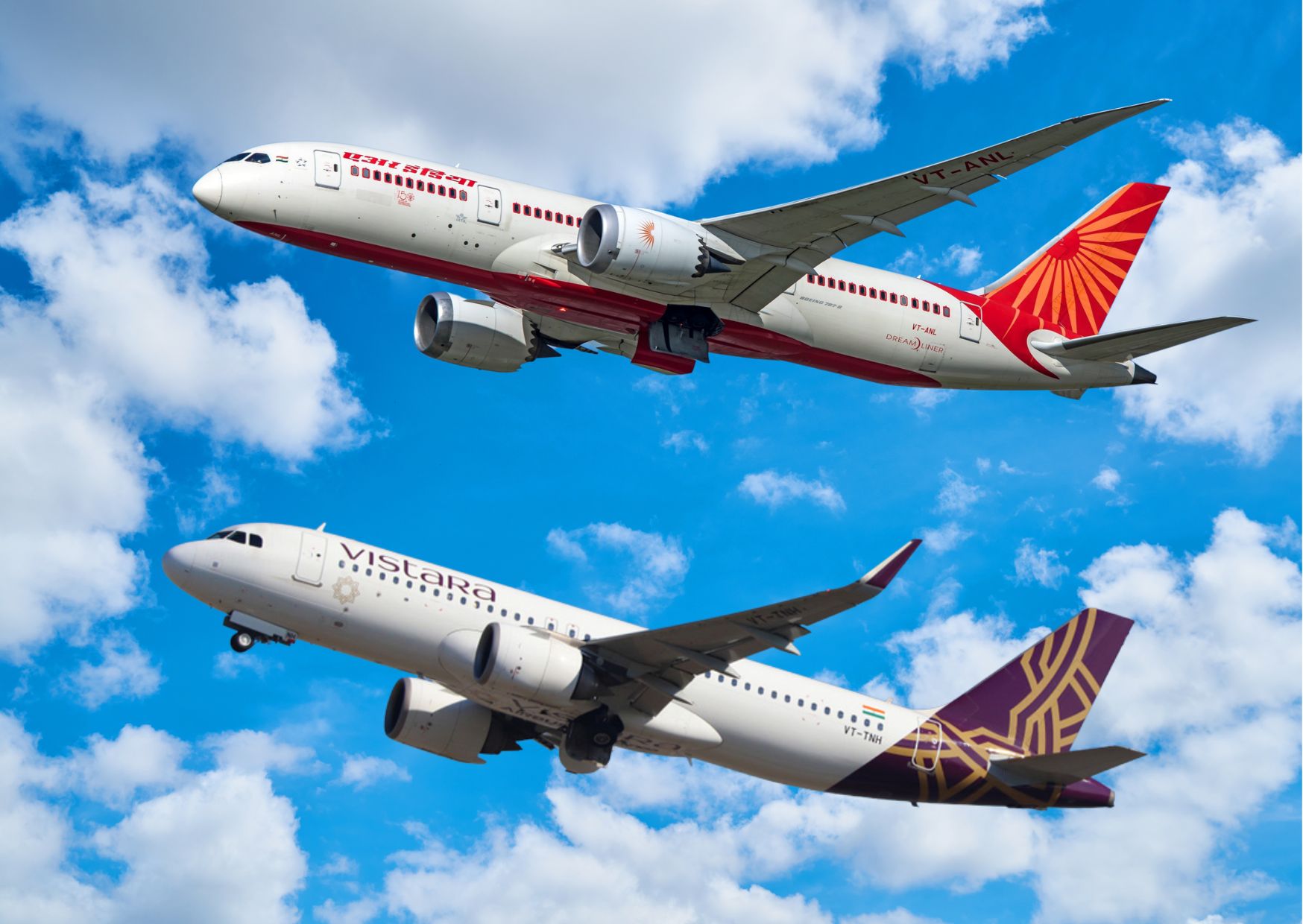
Air India and Vistara customers can now get their boarding passes at the first point of departure for all the travel sectors on a single ticket, and have their baggage checked in through to their final destinations. Tata-owned Air India and Vistara, a joint venture between the Indian conglomerate and Singapore Airlines, have signed an interline agreement that is used to handle passengers or baggage between two or more airlines.
This is primarily used to handle passengers and baggage travelling to destinations with multiple stops. The scope of the agreement between the two airlines includes Inter Airline Through Check-in (IATCI) implementation. Air India and Vistara operate at the same terminals at most major airports in India, adding to the ease of the on-ground travel experience for customers with interline itineraries.
Air India and Vistara have also implemented ‘Interline Considerations on Irregular Operations (IROPs)’ or the ‘disruption transfer’ functionality. This enables the two airlines to seamlessly transfer passengers to one another’s first available alternative flights in case of operational disruptions such as delays, cancellations, diversions, etc. and minimise any inconvenience to their guests, Air India said in a statement.
Last year, both carriers entered into an Interline Considerations on Irregular Operations (IROPs) agreement which enabled them to transfer domestic and international passengers to each other in case of a disruption in flight operations involving either airline. The arrangement between them enables airport teams of both airlines to offer alternative first available flights to minimise inconvenience to passengers. Before that, Air India and AirAsia India had also entered into a similar agreement with AirAsia India for two years.
Comments of the Officials
Speaking of the interline partnership, Campbell Wilson, CEO & MD, of Air India, said: “We are pleased with our interline partnership with Vistara, which will provide greater connectivity and convenience to our joint customers travelling within and outside of India on both our expanding route networks." He further added, "Our common commitment to excellence in safety and customer service lies at the forefront of this partnership. We look forward to serving Vistara’s customers with additional travel choices to Air India destinations across the Americas, Europe, Far East, Australia, and the Middle East."
"This partnership is reflective of our deep-rooted commitment to offering our customers the finest and the most convenient way to fly across the world. We are delighted to further strengthen our relationship with Air India and connect our customers to new destinations in their wide network," Vinod Kannan, Chief Executive Officer, Vistara said.
The new interline partnership with Vistara is in addition to over 100 interline agreements and close to 50 through check-in agreements it has with partner airlines globally, such as Lufthansa, United Airlines, Air Canada, and Singapore Airlines, among others.
Air India's Growth Plan
Last year in September, Air India formed a five-year strategy to gain at least 30% market share under its transformation plan called Vihaan.AI. Under the five-year roadmap, the airline strives to significantly grow its international routes and focuses on sustainable growth, profitability and market leadership. Recently, Air India announced having entered the 'take off' phase in 'Vihaan.AI', which is focused on developing the platforms, processes, and systems needed to build toward excellence.
Air India served as a government-run enterprise and the national carrier for a period of 69 years before being reacquired by the Tata Group in January 2022 under a government-led strategic divestment programme.
The partnership is also expected to drive competition in the Indian aviation industry, which has been dominated by two major players, IndiGo and SpiceJet. With this partnership, Air India and Vistara will be able to compete more effectively by providing customers with a wider range of options and a more seamless travel experience.
Read next
Air Works Launches Line Maintenance Services For International Airlines at Kathmandu Airport
Radhika Bansal
03 May 2023
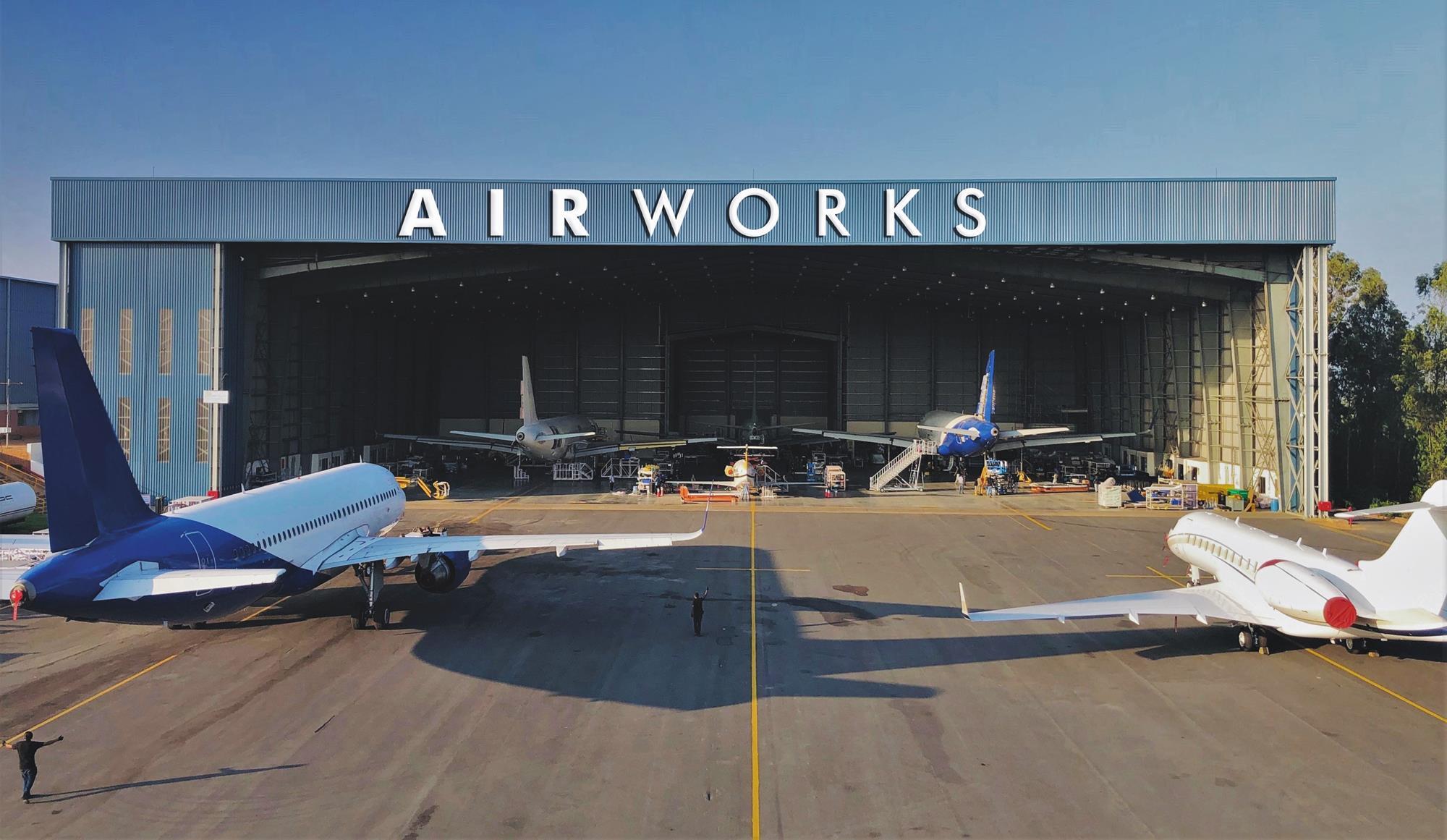
Air Works, India’s largest independent provider of aviation services and MRO said that it has started providing line maintenance services to foreign airlines from Kathmandu, Nepal. Air Works has now increased its presence in the SAARC area as a result of the launch.
To provide its well-regarded line maintenance services from Nepal's busiest international airport, Tribhuvan International Airport (TIA) in Kathmandu, the business has partnered with Siris Aircraft Maintenance Repair and Overhaul Pvt. Ltd. (SAMRO), situated in Kathmandu. The siris.aero Group, which has been in the aviation sector in Nepal for more than 30 years, includes Siris Aircraft MRO (SAMRO). To provide aircraft maintenance/services and support, the organisation has teamed up with recognised aviation & MRO companies and top manufacturers.
SAMRO is Nepal’s first private and independent Approved Maintenance Organization (AMO) with a strong presence at the Tribhuvan International Airport. Licensed by the Government of Nepal including the Ministry of Culture, Tourism & Civil Aviation, as well as the Ministry of Industry, it holds 145 Approval from the Civil Aviation Authority of Nepal (CAAN) to undertake technical handling services including Line maintenance, periodic inspection as well as the rectification of minor defects, at the international airport.
Commenting on its SAARC expansion, Mr. D Anand Bhaskar, Managing Director & CEO, of Air Works Group said, “For a long, our key international customers had been requesting us to expand our services footprint in the region and today, we are extremely happy to have been able to take this first step in association with Siris Aircraft MRO. The development is also well-timed from a market perspective, given the strong revival in air traffic and the enhancement of aviation infrastructure in Nepal. We believe that this launch could lay the foundation for expanding the scope of our current collaboration with Siris to other airports and other operators in Nepal, which could eventually lead to an enhancement in the scope of services beyond the current transit/ daily/ weekly checks.”
He also remarked, “The extension of our operational footprint into Nepal reflects Air Works’ strong and positive customer relationships that have been built over a decade and are underscored by a philosophy of trust, reliability, mutual understanding and cooperation.”
Reports indicate that international passenger traffic in Nepal has rebounded to near pre-Covid levels, registering an increase of 141% from 2021, primarily driven by gains in tourism. This also corresponds with higher international flight movements now that pandemic curbs have been completely eased.
About The Collaboration
Under the terms of the collaboration, while SAMRO will liaise with local regulatory authorities and provide technical manpower and infrastructure including equipment & tooling, Air Works will depute certifying staff or Maintenance Engineers, to clear the aircraft, besides undertaking business development. The services will be executed under the Air Works’ Quality system which has been extended to cover the new station.
Commenting on the collaboration, Mr. Arun Malla, Executive Chairman, Siris Aircraft MRO said, “We are delighted to collaborate with Air Works – India’s numero uno aviation engineering & maintenance company and MRO brand, acclaimed for its domain expertise, workmanship, and professionalism to offer Line maintenance services from the Tribhuvan international airport. The association will not only expand our market proposition but will also enrich our culture and strengthen our work practices, which will help us to be in sync with global service delivery benchmarks. With Air Works now at Kathmandu, incoming international carriers to the airport can be sure of “flying assured”, underlining the country’s commitment to safety. With burgeoning air traffic, Kathmandu and other emerging airports in Nepal represent a cradle of opportunities and beginning with Line services, we intend to leverage and enlarge our relationship gradually and cover the entire country.”
Currently, over 30 leading international airlines fly to and from Tribhuvan International Airport (TIA) to more than 45 destinations throughout Asia and the Middle East. Despite Gautam Buddha International Airport (GBIA) – Nepal’s 2nd major airport that began international operations last year, Tribhuvan International Airport continues to be the country’s hub for international carriers.
As part of the agreement, Air Works would be extending its entire gamut of approvals covering Boeing (737/ 767/ 777/ 787 family), Airbus (319/ 320/ 321/ 330/ 350 family) and ATR 42/ 72 (500/ 600) aircraft to the new station. Interestingly, the new venture already has a leading Middle Eastern airline as its first customer.
With a pan-India presence across 19 international airports, Ai Works is already the biggest provider of Transit or Line Maintenance services to foreign carriers [airlines and cargo] operating into the country. Air Works holds approvals from Civil Aviation Authorities of over 20+ countries that certify it to maintain both narrow-body and wide-body aircraft at leading airports in the country and now, at Kathmandu. In what may be of interest to the industry, Air Works’ relationship with Nepal goes back almost sixty years when it used to maintain and undertake 12/24 monthly checks on the Dakotas operated by Nepal Airlines (formerly Royal Nepal Airlines Corporation).
About Air Works
As one of India’s oldest aviation brands that commenced business in 1951, Air Works Group’s commitment towards MRO & aviation services has been exceptional and this network expansion underscores that the company’s capabilities are on par with international standards. As the Group spreads its wings in the region, its formidable client base will likely benefit from this partnership and its resulting synergies. Air Works is also certified to maintain more than 50 types of aircraft, making it also the most diversified MRO in the country with a pan-India network of 27 locations. The Group also provides commercial aircraft asset management services, avionics and aircraft finishing services apart from MRO-related offerings. Its customers include both civil (fixed wing + rotary wing) and military services, including commercial airlines, business aviation (owners/ operators) companies, and Indian defence forces.
Earlier this year, Air Works was once again bestowed with the Best MRO Services Award by ASSOCHAM in recognition of its contribution towards the growth of the Civil Aviation sector. Its group company - SA Air Works (JV with Scandinavian Avionics) recently became Indian Civil Aviation’s first Avionics Design Organization [DOA], with the capability to design DGCA-certified STCs and repair schemes for a whole array of aircraft including helicopters. Last month, Air Works became the first MRO in India to successfully complete the End-of-lease check on an A320neo aircraft, within the country.
Established in 1951, Air Works Group is India’s biggest and most highly diversified independent MRO with the largest pan-India network presence across 27 cities. It is the preferred MRO partner to global aviation OEMs, aircraft owners/ operators (including fixed-wing & rotary-wing), lessors, airlines, and the Indian Defense Services, offering a host of services including MRO and heavy checks, line maintenance, cabin interior solutions, exterior finishing and painting, avionics upgrades, integrations and retrofits, end-of-lease/ redelivery checks, maintenance training (CAR 147), and asset management services to domestic and international clients.
Specialized services such as avionics, component repairs and asset management services are offered via Group companies – SA Air Works and Acumen Aviation. Air Works undertakes base maintenance for ATR 42/72, A320 and B737 family of aircraft as well as medium and large business jets at its EASA and DGCA-certified facilities including Mumbai, Delhi, Hosur and Kochi, supported by duly certified, in-house shops. The Company also undertakes the modification and assembly of rotary-wing aircraft and is an Authorized Service Centre (ASC) for Bell and Leonardo helicopters.
Air Works enjoys an impeccable reputation in the industry for proven capabilities, outstanding workmanship, quality, and an exceptional safety orientation. The Company takes immense pride in its 71-Year aviation legacy and a culture that accords paramount importance to customers, which has allowed it to successfully deliver several India-first and industry-first projects. The Group is the recipient of several industry awards and was recently adjudged the Best MRO Service Provider by the Ministry of Civil Aviation, Govt. of India.
About SA MRO PVT. LTD. and SIRIS AERO
Siris Aircraft MRO Pvt. Ltd. (SAMRO) is Nepal’s first private, independent Approved Maintenance Organization (AMO) holding 145 Approval from the Civil Aviation Authority of Nepal (CAAN), which allows it to offer technical handling services including Line maintenance, periodic inspections and rectify minor defects. The company is part of Nepal-based siris.aero Group that has other aviation businesses namely, Siris Aviation (General Sales Agency), SK Flightline (Ground Handling), and Avicon (Aviation Consulting and Asset Sale/Purchase). Siris.aero has offered maintenance/ services and support with complete aviation solution systems to the local and international aviation community for over 3 decades.
The Group enjoys a strong reputation, is financially sound and employs over 75+ number of experienced and highly skilled professionals including engineers and technicians. Its key services include Line maintenance services and engineering support to international airlines, Line & Base maintenance for helicopters, Ramp and passenger services for international airlines, Logistics and Spares support, Asset Management, Component repair and overhaul, Installation and bench tests, Aviation consulting as well as liaison with regulatory and airport authorities for operator support.
Read next
Low-cost carrier SpiceJet has announced a revival plan for its 25 grounded aircraft amid the Go First bankruptcy case. SpiceJet said in a press release that INR 400 crore for the revival of its aircraft would be drawn from the government’s Emergency Credit Line Guarantee Scheme (ECLGS) and better cash accruals.
Ajay Singh, Chairman and Managing Director, of SpiceJet, said, “We are meticulously working towards returning to service our grounded fleet back in the air soon. The majority of the ECLGS funding received by the airline would be utilized for the same, which will help us capitalise and make the most of the upcoming peak travel season.”
SpiceJet cited the government's Emergency Credit Line Guarantee Scheme (ECLGS) and improved cash flow for the aircraft revival plan. SpiceJet faces severe financial difficulties, with its net worth at the end of March 2022 being a negative INR 4,340 crore. Additionally, it reported losses before tax of over INR 3,870 crore in the four years leading up to March 2022.
The carrier has had to ground some of its Boeing 737 Max aircraft and is still grappling with working capital issues, despite the modified Emergency Credit Line Guarantee Scheme (ECLGS) intended to assist airlines. It is currently operating with approximately 44 planes, with around 25 aircraft grounded, partly due to supply-chain obstacles. This comes after the Directorate General of Civil Aviation (DGCA) in July 2022 restricted SpiceJet's flights to 50% of departures approved under the summer schedule.
Troubles For The Airline
DGCA had said at the time that SpiceJet, on several occasions, either turned back to its originating station or continued landing at the destination with degraded safety margins. The regulator also noted that poor internal safety oversight and inadequate maintenance actions had degraded the safety margins.
From January 2022 to February 2023, SpiceJet wrongly denied boarding to 3,377 passengers, the highest among all airlines in India. The airline has paid INR 64.66 lakh rupees as compensation to affected passengers in the same period. Experts had said that the large number of denied bookings was due to overbooking by the airline.
SpiceJet restructured its USD 100-million outstanding dues to aircraft lessor Carlyle Aviation Partners into equity shares and compulsorily converted debentures (CCDs) in the previous month. The airline's board sanctioned the issuance of new equity shares worth USD 29.5 million, as a result of which Carlyle Aviation Partners will possess more than a 7.5% equity stake in SpiceJet.
On May 2, domestic budget carrier Go First declared that it had applied to voluntary insolvency resolution proceedings at the National Company Law Tribunal (NCLT) in Delhi. The announcement was made by the airline's CEO, Kaushik Khona, shortly after the carrier, owned by the Wadia Group, declared a temporary suspension of flight operations on May 3 and 4 due to a severe funds crunch. Khona also stated that the airline will resume its flights once the NCLT approves the application.
The company's market share plunged to a fiscal year low of 6.4%, down from 12.7% in March 2018, air traffic data from the aviation regulator for March showed. Rival IndiGo, in stark contrast, saw a sequential increase in market share to 56.8%, marking a six-month-high.
In a sign of the fierce competition in a sector dominated by IndiGo and the recent merger of Air India and Vistara under the Tata group, Go First filed for insolvency on Tuesday, marking the first major airline collapse in India since Jet Airways filed for bankruptcy in 2019.
Shares of SpiceJet rallied over 5% in the early hours of May 3 after the company announced that it would look to borrow INR 400 crore to fix 25 grounded aircraft. At 10:35 AM, SpiceJet was trading at INR 33 on the BSE, up 4.8% from its previous close, while India's benchmark Sensex fell 0.3%.
Read next
Emirates President Predicts Sustained Demand: No Impact from The Upcoming Competition
Abhishek Nayar
03 May 2023
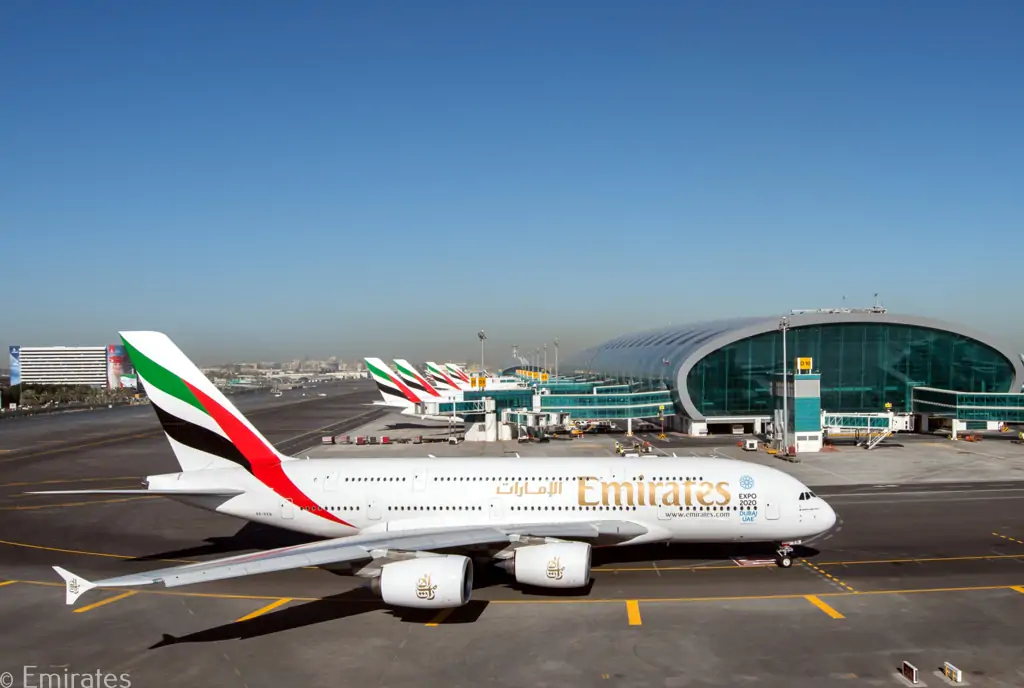
In recent years, the airline industry has undergone substantial changes, with new rivals rising and incumbent carriers experiencing problems. Despite the competition, Emirates President Sir Tim Clark believes the airline is well-positioned to continue its growth and popularity.
The Upcoming Contest
Several new airlines have emerged in recent years, all vying for a piece of the market. However, Clark believes that the upcoming competition will not pose a significant threat to Emirates. He feels that these airlines lack the infrastructure and resources that Emirates has amassed over the years. Furthermore, the existing airlines with which Emirates competes are struggling to keep up, making it unlikely that new airlines will succeed.
Current Situation
Emirates Airline President Sir Tim Clark stated on Tuesday that the addition of new Saudi airlines and the expansion of regional competitors will not have an impact on the Dubai-based carrier, adding that he expects strong demand, particularly for leisure travel.
"We had 86 flying last year, and we need to get another 20-30 in the air as soon as we can," Clark said, saying that supply chain concerns were complicating the refurbishing process. He also stated that Emirates had 165 aircraft on order, with "probably more on the way." He predicted that new Airbus A350 passenger planes will begin flying in August of next year, with 50 delivered over a two-and-a-half-year reduced delivery timetable. "We need them as quickly as possible," he added.
Emirates' Distinctive Selling Proposition
Emirates has various differentiating selling points that set it distinct from its competitors. The airline's dedication to provide a great customer experience is one of the most crucial. Emirates makes significant investments in its fleet, providing opulent cabins, cutting-edge entertainment systems, and gourmet meals. Furthermore, Emirates has a global network of destinations, making it simple for travellers to reach their destination. These elements have led to Emirates' success and will most likely continue to attract consumers in the future.
The Growth Strategy of Emirates
Emirates' expansion plan focuses on broadening its worldwide network, increasing customer service, and investing in its fleet. The airline operates a fleet of over 250 aircraft and continues to invest in new jets to provide its customers with cutting-edge technology and comfort. Furthermore, Emirates has alliances with several other airlines, allowing it to provide customers with more destinations and flight options.
The Emirates' Pandemic Response
The epidemic has had a huge impact on the aviation sector, with several carriers fighting to remain in business. Emirates, on the other hand, has weathered the storm because of its strong financial position and capacity to react to changing conditions. To safeguard its passengers and employees, Emirates moved quickly to introduce safety practices like required mask use and better cleaning processes. Moreover, despite the difficult economic conditions, Emirates has continued to invest in its fleet.
Conclusion
Despite increased competition in the market, Emirates President Sir Tim Clark is sure that the airline will continue to see continuous demand. Emirates' dedication to offering a great customer experience, worldwide network of destinations, and fleet investment are expected to keep the airline ahead of the competition. Furthermore, Emirates' response to the pandemic demonstrated its ability to adapt to changing circumstances as well as its dedication to the safety of its passengers and employees.
With Inputs from Reuters

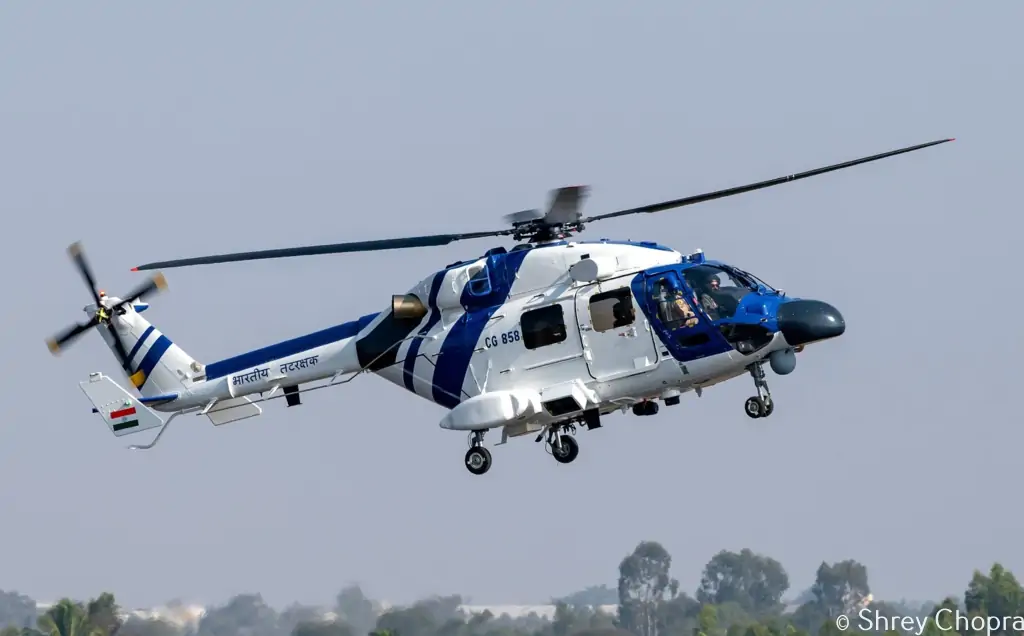
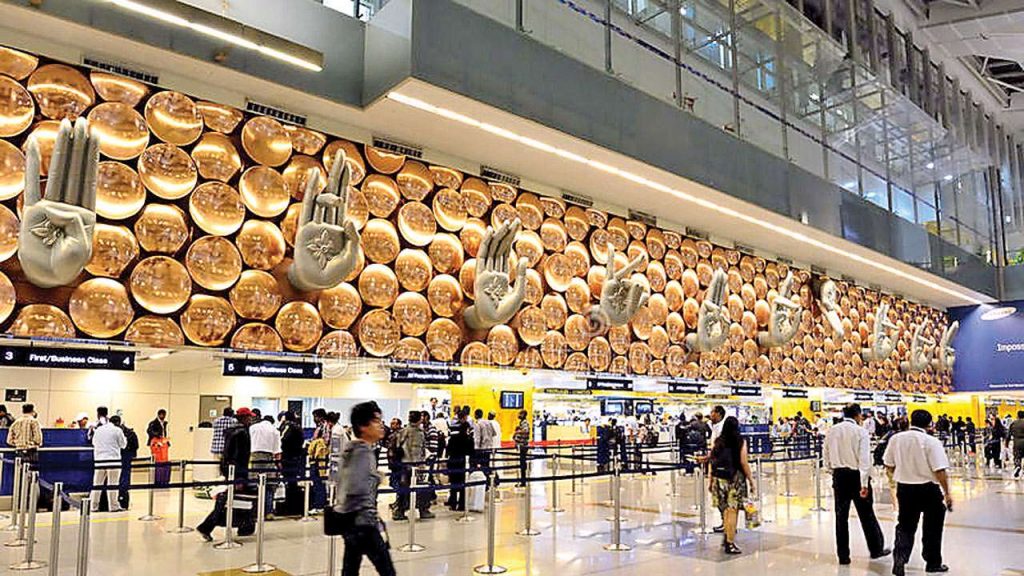
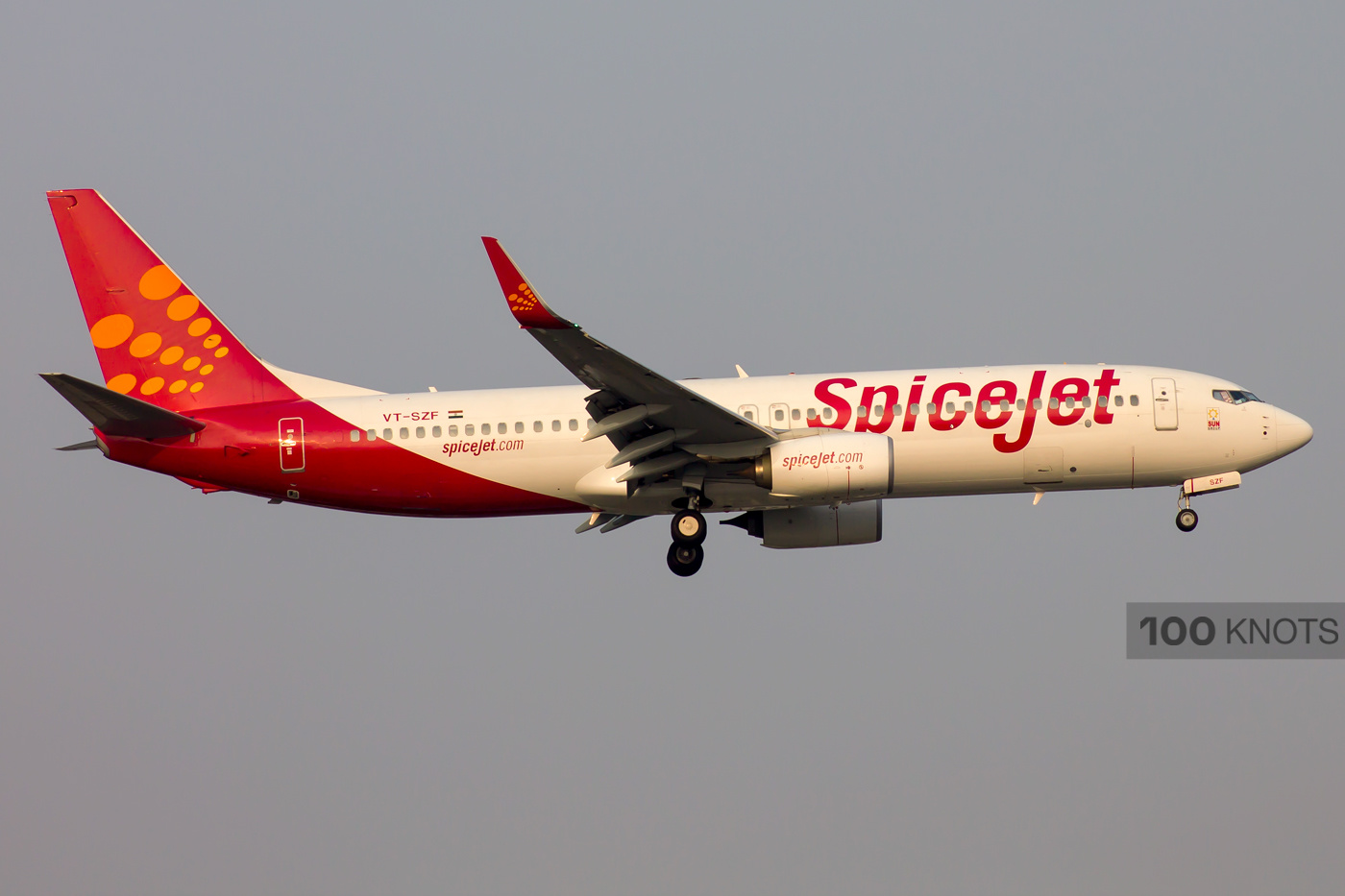

Comment